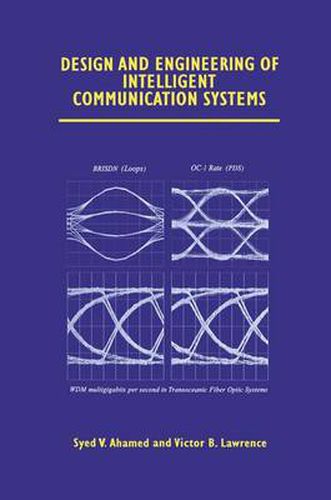Readings Newsletter
Become a Readings Member to make your shopping experience even easier.
Sign in or sign up for free!
You’re not far away from qualifying for FREE standard shipping within Australia
You’ve qualified for FREE standard shipping within Australia
The cart is loading…






This title is printed to order. This book may have been self-published. If so, we cannot guarantee the quality of the content. In the main most books will have gone through the editing process however some may not. We therefore suggest that you be aware of this before ordering this book. If in doubt check either the author or publisher’s details as we are unable to accept any returns unless they are faulty. Please contact us if you have any questions.
FIGURE 18.13e. Detector Output. …………………………………………………………… 618 FIGURE 18.14a. WDM Energy Distrubution into the Fiber ……………………… 619 FIGURE 18.14b. Fiber Loss for the WDM Band ………………………………………. 619 FIGURE 18.14c. Fiber Group Delay Distribution …………………………………….. 619 FIGURE 18.14d. Receive Energy Distribution …………………………………………. 619 FIGURE 18.15a. Channell Eye Diagram at PIN Diode …………………………… 621 FIGURE 18.15b. Channel 2 Eye Diagram at PIN Diode …………………………… 621 FIGURE 18.15c. Channell System Output at Detector …………………………… 621 FIGURE 18.15d. Channel 2 System Output at Detector …………………………… 621 PREFACE The emerging networks in our society will touch upon the life of everyone. These networks have started to bring about an immense information revolution. The revolution within our intellectual life will be similar to the materialistic revolution that followed the invention of the steam and the internal combustion engines. From the perspective of the 1980s, the information networks are indeed evolving and their influence can only be gradual. However, the strides of progress are accelerating in the 1990s. Networks in our society offer the most candid area of convergence for the computer and the communication technologies. The two technologies are mature in their own right. However, there are a few major factors that prevent network engineers from constructing modern communication systems from components borrowed from each of these two technologies: * Major innovations are happening. * Specialized components evolve in synergistic patterns. * New technologies emerge. * Inquisitive minds cross disciplinary barriers.
$9.00 standard shipping within Australia
FREE standard shipping within Australia for orders over $100.00
Express & International shipping calculated at checkout
This title is printed to order. This book may have been self-published. If so, we cannot guarantee the quality of the content. In the main most books will have gone through the editing process however some may not. We therefore suggest that you be aware of this before ordering this book. If in doubt check either the author or publisher’s details as we are unable to accept any returns unless they are faulty. Please contact us if you have any questions.
FIGURE 18.13e. Detector Output. …………………………………………………………… 618 FIGURE 18.14a. WDM Energy Distrubution into the Fiber ……………………… 619 FIGURE 18.14b. Fiber Loss for the WDM Band ………………………………………. 619 FIGURE 18.14c. Fiber Group Delay Distribution …………………………………….. 619 FIGURE 18.14d. Receive Energy Distribution …………………………………………. 619 FIGURE 18.15a. Channell Eye Diagram at PIN Diode …………………………… 621 FIGURE 18.15b. Channel 2 Eye Diagram at PIN Diode …………………………… 621 FIGURE 18.15c. Channell System Output at Detector …………………………… 621 FIGURE 18.15d. Channel 2 System Output at Detector …………………………… 621 PREFACE The emerging networks in our society will touch upon the life of everyone. These networks have started to bring about an immense information revolution. The revolution within our intellectual life will be similar to the materialistic revolution that followed the invention of the steam and the internal combustion engines. From the perspective of the 1980s, the information networks are indeed evolving and their influence can only be gradual. However, the strides of progress are accelerating in the 1990s. Networks in our society offer the most candid area of convergence for the computer and the communication technologies. The two technologies are mature in their own right. However, there are a few major factors that prevent network engineers from constructing modern communication systems from components borrowed from each of these two technologies: * Major innovations are happening. * Specialized components evolve in synergistic patterns. * New technologies emerge. * Inquisitive minds cross disciplinary barriers.